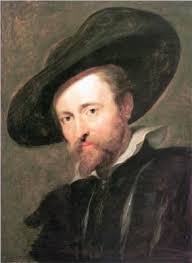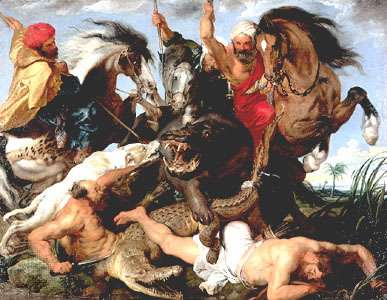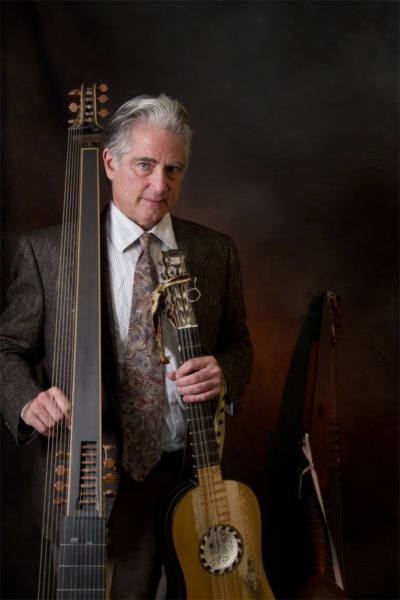
“He was clearly a charming and attractive companion, described as having ‘a tall stature, a stately bearing, with a regularly shaped face, rosy cheeks, chestnut brown hair, sparkling eyes but with passion restrained, a laughing air, gentle and courteous’. Rubens began his artistic life in Antwerp in the Flemish lowlands. In the last decade of the 16th century, the music and artistic trends of Flanders were still deeply rooted in the Renaissance. As soon as he had completed his training, he set out for Italy, where, he lived copying and incorporating the techniques of the renaissance and classical masters into his own art.” ~ Richard Savino, Special Guest Director
Read more below
Richard Savino, Guest Director, theorbo and guitar; Jennifer Kampani, soprano; Deborah Rentz-Moore, mezzo-soprano; Ryland Angel, counter-tenor; Daniel Stepner and Danielle Maddon, baroque violin; Laura Jeppesen, viola and viola da gamba; Catherine Liddell, theorbo and guitar; Michael Sponseller, harpsichord
I. Prelude: Music from the Lowlands: Rubens’ Youth
Lascia filli mia cara Jan Sweelinck (1562-1621)
II, The Italian Sojourn: 1600-1608, Rubens Comes of Age
Orfeo Suite Claudio Monteverdi (1567-1643)
Lamento della ninfa Monteverdi
Toccata Kapsberger (1580-1651)
Amarilli mia bella Giulio Caccini (1551-1618)
Chi desia di saper Francesca Caccini (1587-1640)
Canzona quarta Giovanni Frescobaldi (1583-1643)
III. France 1622 -1625
Pavan and Galliard pour le mariage d’Henri le Grand Anonymous
Enfin la beauté que j’adore Etienne Moulinie (1599-1669)
Ma bergère, non légère Gabrielle Bataille (1574-1630)
Vos mespris chaque jour Michel Lambert (1610-1696)
Sans murmurer Lambert
Intermission
IV. Spanish Intrigue (1627 – 1629)
Ciaconna Andrea Falconieri (1585-1656)
Sinfonia Francisco Corbetta (1615-1681)
Sonata in G Don Enrico Butler (d.1652)
La Chacona Juan Arañés (d.1649)
V. English Knighthood (1629-1639)
Symphonia in G Nicolas Lanier (1588-1666)
No More Shall Meads Be Met With Flowers Lanier
Though I Am Young Lanier
VI. Return to the Lowlands (1630-1640)
Lacrimae Johann Schop (1590-1677)
O splendor Herman Hollanders (1595 – 1637)
Paduana & Galliard Johann Schop
O Christe Jesu Herman Hollanders
Canzona Johann Schop
Exultate Justi Herman Hollanders
NOTES ON THE PROGRAM
Peter Paul Rubens was a remarkable individual. Not only was he an enormously successful painter whose workshop produced a staggering number of works; but he also played an important diplomatic role in 17th-century European politics. He was clearly a charming and attractive companion, described as having ‘a tall stature, a stately bearing, with a regularly shaped face, rosy cheeks, chestnut brown hair, sparkling eyes but with passion restrained, a laughing air, gentle and courteous’.
Rubens began his artistic life in Antwerp in the Flemish lowlands. In the last decade of the 16th century, the music and artistic trends of Flanders were still deeply rooted in the Renaissance. As soon as he had completed his training, he set out for Italy, where, he lived copying and incorporating the techniques of the renaissance and classical masters into his own art.
The artistic revolution taking place among the artists and humanist scholars of Italy had yet to reach the northern expanse of the European continent. This revolution — in both musical and visual arts — was to have a dramatic impact on Rubens. When he arrived in Italy in 1600, he was an ambitious 23-year-old; by the time he left nearly eight years later, he was an established artist, whose vision reflected influences from his study of ancient Greek and Roman sculpture as well as the work of his innovative Italian contemporaries and their immediate predecessors.
Rubens initially visited Venice, where he soon became court painter to Vincenzo Gonzaga, Duke of Mantua. In addition to the visual arts, the Gonzaga court cultivated poetry, science, and music. Claudio Monteverdi was Gonzaga’s court musician at the time of Rubens’ employment, so we can be certain that Rubens heard the Venetian composer’s music. When Rubens accompanied the Gonzaga court to Florence, it is inevitable that he encountered the music of Jacopo Peri and Giulio Caccini — both members of the Florentine Camerata. In October of 1600, Rubens had the opportunity to witness the marriage of Maria de Medici to the King Henry IV of France, a royal occasion that the artist documented in a series of paintings. At this grand event, Francesca Caccini, Giulio’s daughter and a composer in her own right, performed in a manner that eyewitness accounts described as “ethereal and mesmerizing.”

At the end of 1601, Rubens traveled to Rome, where he had his first direct experience with ancient classical art. Renewed interest in ancient classicism inspired the birth of the Baroque, giving rise to a musical style that has lasted 400 years and is now often referred to as the birth of the “common practice period.” In Rome, it is likely that Rubens heard the music of Girolamo Frescobaldi and the “Fratelli Piccinini,” who were among Italy’s most renowned musicians.
Rubens left Rome and returned to Flanders in the autumn of 1608 and traveled widely to Spain, France, and England, creating works of art as well as serving as a diplomat.
Antwerp
In 1608 news came that Rubens’ mother was dying. He left immediately for Antwerp, but by the time he arrived she had died. Once home, Rubens decided to stay in the city. His reputation had preceded him, and in 1609 at the age of 33 he was appointed court painter to the rulers of the Netherlands, the Archduke Albert and his wife Isabella. The following year, he married his own Isabella – Isabella Brandt.
Rubens could now afford to buy a grand house in a fashionable part of Antwerp. He built a large studio to accommodate his pupils and assistants (he received far too many commissions to complete them all single-handedly). He designed it himself in an Italian style. He also added a circular sculpture hall, based on the Pantheon, to the house.
Rubens’ major business was altarpieces, particularly suitable for an artist who enjoyed working on a grand scale. A diligent and disciplined man, he rose at 4 a.m. each day and worked until 5 in the evening before going out riding to keep himself physically fit. While painting, he would have someone read to him from a work of classical literature. An enthusiastic collector of gems, ancient sculpture and coins, and other curiosities (including an Egyptian mummy), Rubens’ collection became a well-known attraction for visiting dignitaries.
The Diplomat & Court Artist
Court artists were often intimately associated with political leaders and members of the nobility who wanted their image and legacy preserved in a dramatic work of art. As such, they had access to these leaders in very private settings where discussions and negotiations of great international significance took place. Rubens was the perfect individual for such a dual assignment.
Throughout the 1620s he became increasingly busy with diplomatic duties. Antwerp, in the southern Netherlands, was part of an empire ruled by Catholic Spain. The Protestant northern Netherlands were united under Dutch rule. Both sides hoped to unite the Netherlands under their own regime. In 1621 a truce between the Dutch and the Spanish came to an end and, just at this crucial time, the sovereign Archduke Albert died. His consort, Isabella, continued as governor but her situation was a precarious one as Spain, France and England tried to decide whom they should ally themselves with, and against whom.
During this period Rubens was also called upon to negotiate in France and England on behalf of Isabella as the representative of the Spanish Netherlands. Because painters often had reason to travel to foreign courts, he was well placed to carry out secret or delicate visits without his presence arousing suspicion. He became a close confidante of Isabella who valued his advice and in 1624 Rubens was granted a patent of nobility by Isabella’s nephew Philip IV.
From 1622 to 1625 Rubens was commissioned to carry out a huge project in Paris for the notoriously difficult Maria de Medici, widow of King Henry IV of France. Two entire galleries were to be decorated with scenes from the lives of the queen and her late husband. The commission was a fraught one. Maria was awkward and changeable; and her favorite, Cardinal Richelieu, saw Rubens as a political threat. After years of wrangling, the project was abandoned half completed when Maria was banished from court.
In 1625 the plague reached Antwerp. Rubens moved his family to Brussels until the worst of it had passed. They then moved back to Antwerp where, to Rubens’ horror, his wife became ill and died, probably of plague. Usually, a man who prided himself on his stoicism, Rubens was devastated by the loss of ‘one whom I must love and cherish as long as I live’.
Afterwards, Rubens again threw himself into his diplomatic work in order to further distract himself.
The years 1627–1629 find Rubens in Spain on multiple artistic and diplomatic missions. On one of these occasions, King Phillip IV elevates him to the ranks of the nobility and on another, he befriends the great Spanish painter Diego Velasquez.
In 1629 Phillip IV determines that Rubens would be the perfect emissary to negotiate a peace treaty with England. He spent several months in England and while there, reacquaints himself with Anthony van Dyck, who had worked for several years as a pupil and assistant in Rubens’ workshop. He also carried out several commissions for Charles I who was a passionate collector of art. One of the commissions that Rubens received was the decoration of the roof of his new Banqueting House at Whitehall.
Last Years
After 18 months abroad, Rubens had had enough of the thankless task of politicking. He returned to Antwerp to see his children and to look after his domestic affairs. He could also dedicate himself entirely to painting. One of his most important patrons in the 1630s is King Philip IV of Spain who commissioned over 80 paintings.
In 1630, at the age of 53, Rubens married again. To everyone’s surprise he did not marry into nobility but chose Hélène Fourment, the 16 year-old daughter of a respectable merchant family. Rubens was clearly bowled over by his new wife with whom he had five children, and she figures in numerous portraits, including a version of “The Judgment of Paris” in which she appears as Venus.
During his last years Rubens spent increasing amounts of time with his new young family in his country house the Chateau de Steen. He began to paint more landscapes, all for his own enjoyment, rather than for sale.

Having suffered painfully from gout for several years, and in 1639 suffered a particularly bad attack. He died a few months later on May 30, 1640.
~ Richard Savino © 2019
